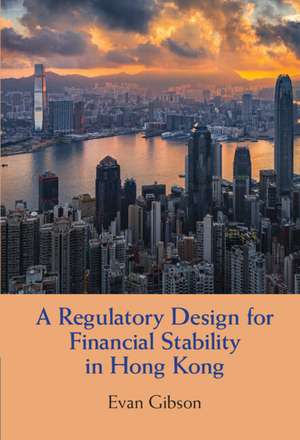A Regulatory Design for Financial Stability in Hong Kong
Autor Evan Gibsonen Limba Engleză Hardback – 31 aug 2022
Preț: 593.66 lei
Preț vechi: 652.38 lei
-9% Nou
Puncte Express: 890
Preț estimativ în valută:
113.59€ • 118.92$ • 93.99£
113.59€ • 118.92$ • 93.99£
Carte tipărită la comandă
Livrare economică 07-21 aprilie
Preluare comenzi: 021 569.72.76
Specificații
ISBN-13: 9781316515624
ISBN-10: 1316515621
Pagini: 350
Dimensiuni: 158 x 235 x 23 mm
Greutate: 0.62 kg
Ediția:Nouă
Editura: Cambridge University Press
Colecția Cambridge University Press
Locul publicării:Cambridge, United Kingdom
ISBN-10: 1316515621
Pagini: 350
Dimensiuni: 158 x 235 x 23 mm
Greutate: 0.62 kg
Ediția:Nouă
Editura: Cambridge University Press
Colecția Cambridge University Press
Locul publicării:Cambridge, United Kingdom
Cuprins
Part I. A Financial History of Hong Kong: 1. Introduction; 2. Hong Kong 1841-1997: financial crises and financial regulation; 3. Hong Kong Special Administrative Region: financial crises and financial regulation; Part II. The Regulatory Models of Financial Supervision: 4. The sectoral supervisory model: central banks, banking regulations and financial stability; 5. Integrated, twin peaks, and systemic risk supervision for financial stability; Part III. Contemporary Regulatory and Supervisory Approaches: 6. Conceptualizing financial stability during financial crises: liquidity and systemic risk; 7. Financial regulation for a sustainable economy: financial stability approaches; Part IV. Banking Regulation and Supervision in Hong Kong: 8. Bank regulation and supervision: Basel III and systemic risk; 9. Banking systems and financial stability: monetary policy and unconventional liquidity tools; Part V. Resolution Regimes and Crisis Management Mechanisms: 10. Deposit protection and the lender of last resort; 11. Resolution regimes and systemically importance banks; 12. Central clearing counterparties and derivatives: financial regulation and resolution regume; Part VI. Financial Market Integration with the Mainland: 13. China's International Financial Centre, Renminbi infrastructure and cross-boundary regtech; 14. Dollar sanctions, the digital yuan and regulating fintech; Conclusion.
Notă biografică
Descriere
The post-2008 financial regulatory reforms do not fully appreciated the critical role of the supervisory model in attaining financial stability.
